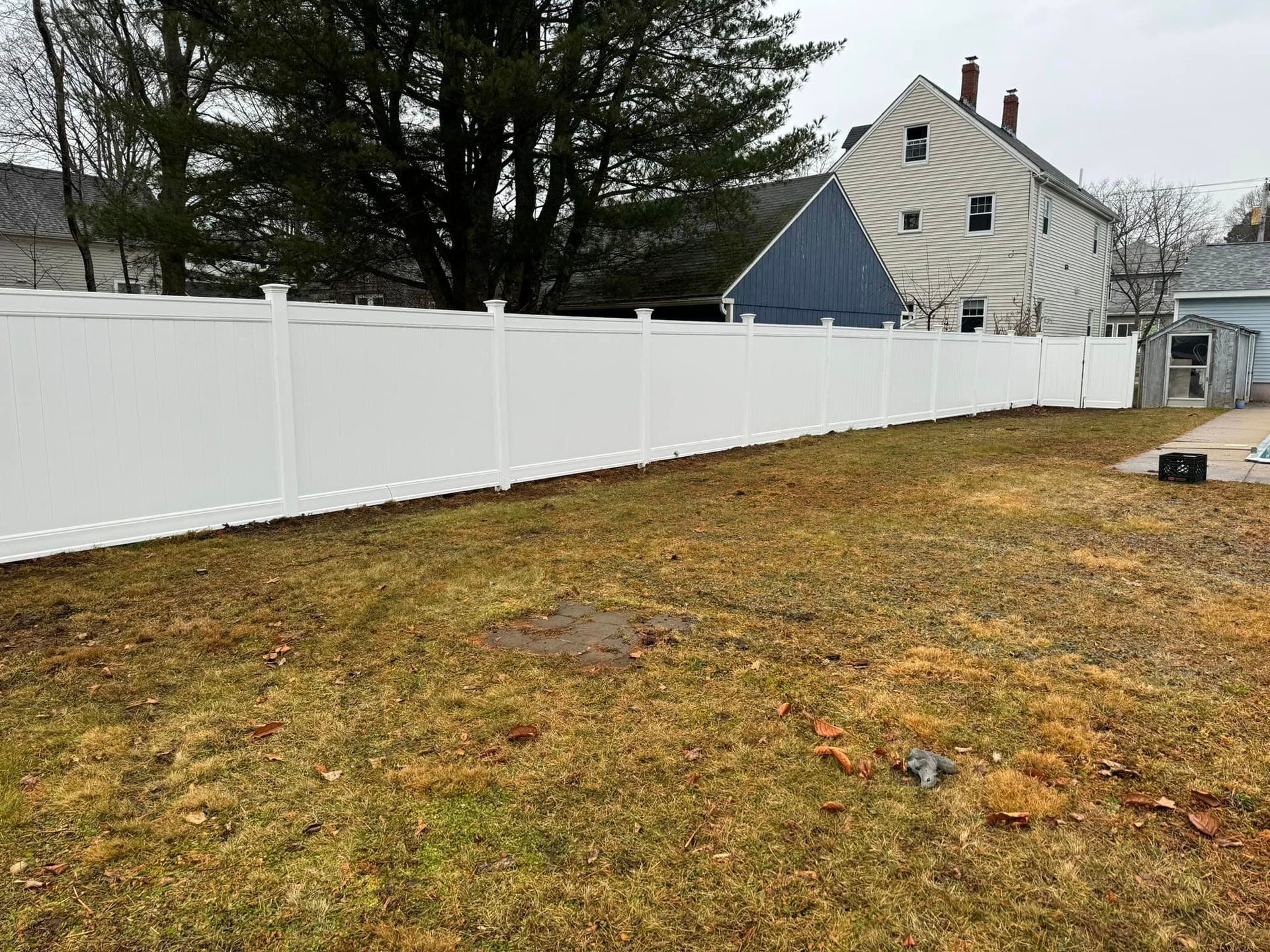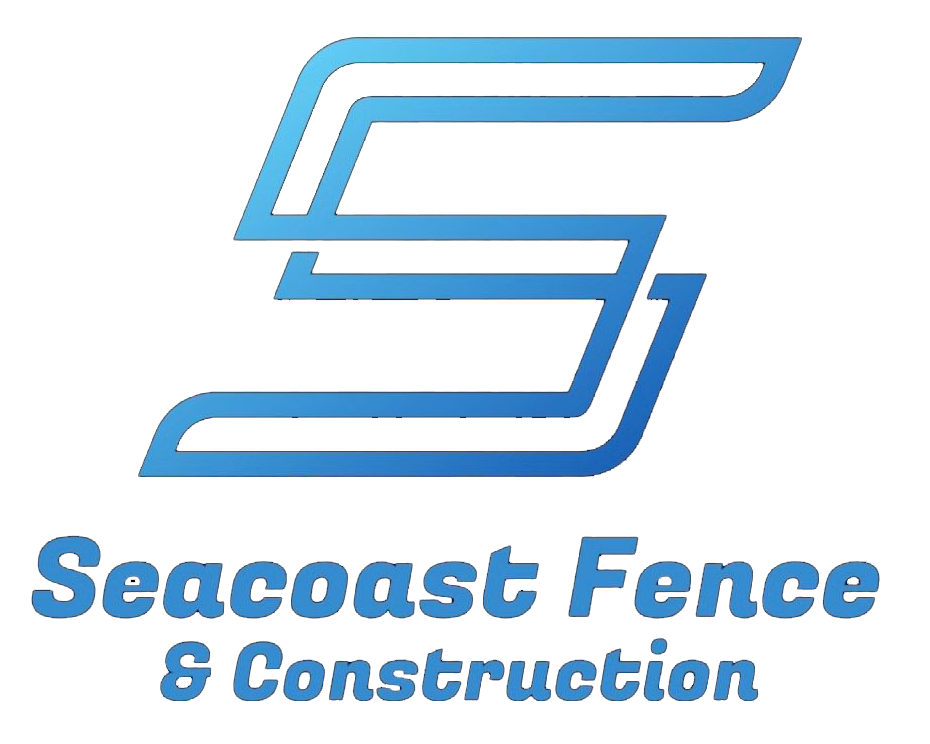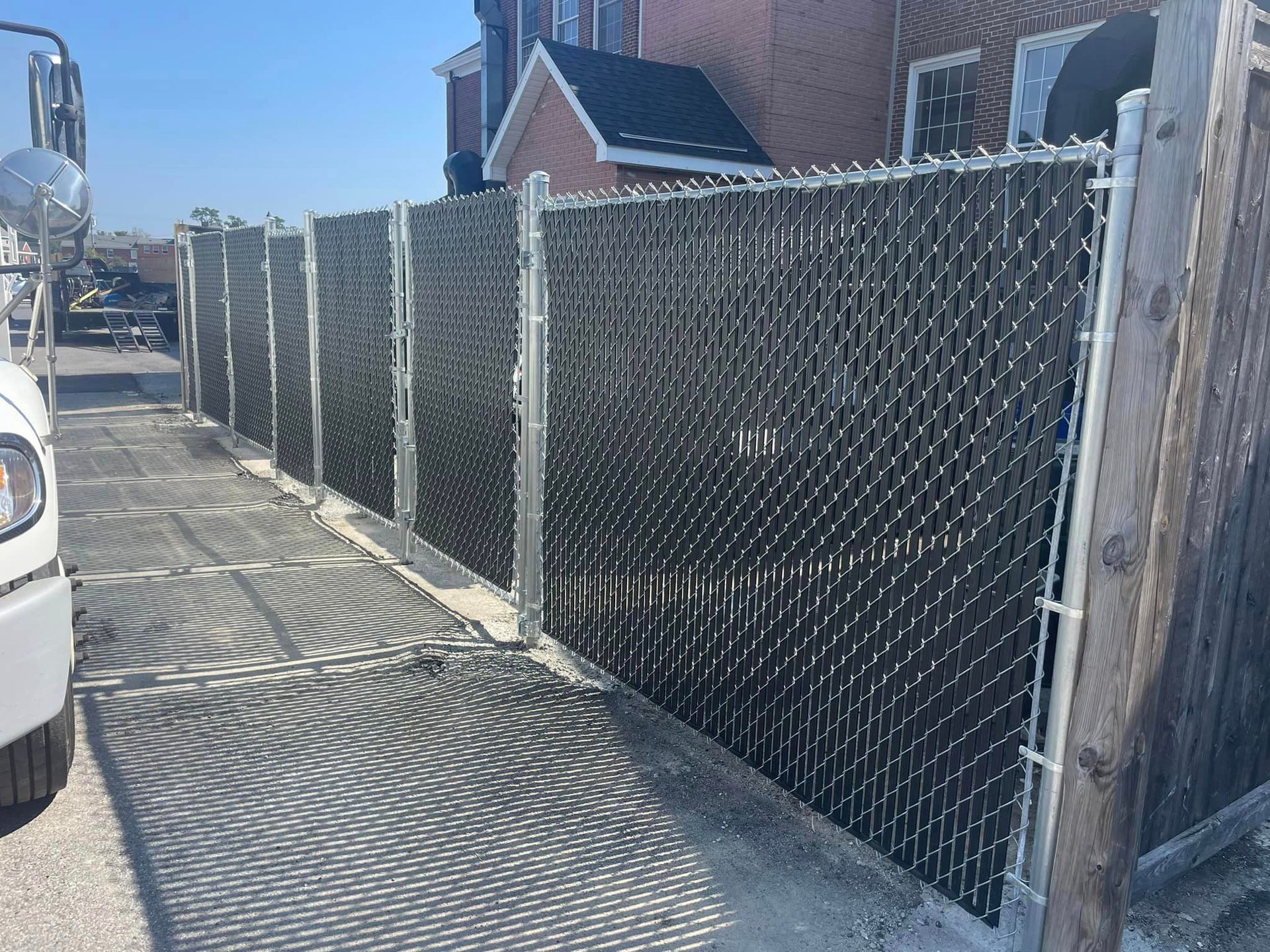Call Us: (207)-415-0219
How to Choose the Right Fence Height for Privacy, Security & Aesthetics

Finding the Perfect Fence Height: Privacy, Security & Style Made Simple
The height of your fence isn’t just about looks—it affects your privacy, security, and how your property feels. A fence that’s too short won’t block out neighbors or keep pets contained, while one that’s too tall might make your yard feel closed off. Choosing the right height means finding a balance between function and design.
If you're wondering how tall your fence should be, the best height depends on your goal—6 to 8 feet for privacy, at least 6 feet for security, and 3 to 4 feet for curb appeal. Local zoning laws may also limit how high your fence can be, so checking the rules before building is important.
This guide will walk you through everything you need to know about fence height. Whether you're looking to block views, keep your home secure, or add style to your yard, we’ll help you choose the right size for your needs.
What’s Your Primary Reason for Installing a Fence?
Before deciding on height, think about what you need most from your fence. Some homeowners want complete privacy, while others need security or just a decorative touch. The right height depends on your goal.
I want privacy
Best height: 6 to 8 feet. If blocking views is your top priority, taller fences work best. Solid wood, vinyl, or composite fences give you full coverage, while options like lattice tops add style without sacrificing privacy.
I need security
Best height: At least 6 feet. A tall, sturdy fence makes it harder for intruders to climb over. Metal fences like wrought iron or aluminum add security without feeling closed in. For extra protection, choose a design with smooth, hard-to-grip surfaces.
I want a stylish look
Best height: 3 to 4 feet. A lower fence keeps your property open while adding curb appeal. Wrought iron, picket, or split-rail fences work well for front yards, gardens, and decorative boundaries.
I want to reduce noise
Best height: 8 feet or higher. A solid, tall fence helps block out street noise and loud neighbors. Wood, masonry, or composite fences are the best options for sound reduction.
Understanding How Fence Height Affects Functionality
Choosing the right height isn’t just about looks—it affects how well your fence does its job. A fence that’s too short might not give you the privacy or security you need, while one that’s too tall could feel too closed in. Here’s how fence height impacts different needs.
Privacy: The Ideal Height to Block Views
If you want to block neighbors or busy streets, 6 to 8 feet is the best height for a backyard fence. Anything shorter won’t give you full coverage. Wood, vinyl, and composite fences work best because they come in solid panels.
For front yards, most cities limit fence height to 3 to 4 feet to keep the space open. If you want more privacy but need to follow local height rules, consider adding lattice tops or shrubs to create a barrier without breaking code.
Security: Preventing Trespassers & Keeping Pets Safe
A 6-foot fence is usually enough to keep unwanted visitors out. Chain-link, metal, or reinforced wood fences work well for security. If you have larger dogs or want extra protection, consider 7 or 8 feet with a smooth surface to prevent climbing.
For commercial properties or high-security areas, fences may be 8 feet or taller, often with added security features like spiked tops or reinforced panels. Always check local codes before installing a fence taller than 6 feet.
Aesthetics & Curb Appeal: Creating the Right Look
A fence can add character to your property, but the height should match your home’s style. Shorter fences (3 to 4 feet) work well for front yards and decorative borders. Picket, wrought iron, and split-rail fences create a welcoming look while defining property lines.
If you want a mix of privacy and aesthetics, consider a tiered fence design—taller in the back for privacy and shorter in the front for curb appeal. Adding plants or trellises can also soften the look of a tall fence.
Noise Reduction: How Height Impacts Sound Control
If you live near a busy road or have noisy neighbors, a tall, solid fence can help block sound. 8 feet or higher works best for reducing noise, but many cities limit fence height.
For better soundproofing, choose composite, masonry, or thick wood fences. Adding hedges or sound-dampening panels can also improve noise control without needing extra height.
Legal Fence Height Restrictions & Permit Requirements
Before building a fence, it’s important to check local rules. Many cities and homeowners’ associations (HOAs) have limits on how tall a fence can be, especially in front yards and along property lines. Installing a fence that’s too tall could result in fines or even require removal.
Common Fence Height Limits
While rules vary by location, here are some general guidelines:
- Front yard fences: Usually limited to 3 to 4 feet to maintain open visibility.
- Backyard fences: Can be 6 to 8 feet, depending on local zoning laws.
- Corner lot fences: May have stricter rules to avoid blocking traffic views.
- Pool fences: Typically required to be
at least 4 feet high for safety.
To avoid issues, check with your local zoning office or HOA before installing a fence. Some areas may allow taller fences with a special permit or approval from neighbors.
How to Get a Permit for a Taller Fence
If you need a fence taller than local regulations allow, you may need a variance permit. This process usually involves:
- Filing an application with your local zoning department.
- Explaining the reason for the extra height (e.g., security, privacy, or noise reduction).
- Getting approval from neighbors in some cases.
- Attending a hearing if required by your city.
Skipping the permit process can lead to fines or having to take down your fence. Always confirm the rules before starting your project.
Customizing Fence Height for Functionality
Not all yards are the same, and sometimes a standard fence height won’t work for your property. Whether you have a sloped yard, want a mix of privacy and aesthetics, or need to follow local height limits, customizing your fence can help you get the best results.
Graduated Fence Heights for Sloped Landscapes
If your yard isn’t level, a fence with graduated heights can create a smooth, even look while keeping privacy where you need it. There are two common ways to handle fencing on a slope:
- Stepped fencing: Uses panels that "step" down the slope in sections, keeping each panel level.
- Racked fencing: Adjusts to the ground’s shape, creating a seamless look without gaps underneath.
Choosing the right method depends on your fence material. Vinyl and metal fences work best for racked designs, while wood and composite fences are better for stepped installations.
Mixing Heights for Privacy and Aesthetics
A fence doesn’t have to be the same height all the way around. You can combine different heights to get the best of both worlds.
- Tall fences (6-8 feet) in backyards for privacy.
- Shorter fences (3-4 feet) in front yards to keep an open feel.
- Lattice or open-top designs to extend height while keeping an attractive look.
This approach helps create privacy without making your yard feel like a closed-off box.
Extending Fence Height Without Breaking Codes
If local rules limit fence height but you still want more privacy, there are ways to extend your fence legally:
- Lattice or trellises: Adding a 1-2 foot lattice top keeps airflow and light while increasing height.
- Hedges or greenery: Tall plants along the fence line offer extra privacy while blending naturally with the yard.
- Pergolas or screens: Placing a
pergola or privacy screen near seating areas can create a taller barrier without adjusting the whole fence.
With the right design, you can get the privacy and security you need without violating local restrictions.
Best Fence Materials for Different Heights
The height of your fence affects more than just privacy and security—it also determines which materials will work best. Some materials are strong enough for tall fences, while others are better suited for shorter decorative barriers.
Wood: Great for Privacy, But Requires Maintenance
Wood fences are one of the most common choices for 6- to 8-foot privacy fences. They provide full coverage, making them great for blocking views and reducing noise.
Pros:
- Fully customizable in height and design.
- Provides excellent privacy and noise reduction.
- Natural look that blends well with landscaping.
Cons:
- Requires regular staining or sealing to prevent rot.
- Can warp or crack over time, especially in extreme weather.
- Taller wood fences may need extra support to prevent leaning.
Vinyl: Durable and Low-Maintenance for Tall Fences
Vinyl is a great alternative to wood for privacy fences. Most vinyl panels come in 6- to 8-foot heights, making them a durable, long-lasting choice.
Pros:
- Resistant to moisture, pests, and rot.
- Doesn’t require painting or staining.
- Sturdy enough for tall fences without extra reinforcement.
Cons:
- Higher upfront cost than wood.
- Fewer color and style options compared to wood.
- Can crack in extremely cold temperatures.
Metal: Best for Security and Decorative Fences
Metal fences, including wrought iron, aluminum, and steel, are commonly used for 3- to 6-foot fences. They provide security while maintaining an open, elegant look.
Pros:
- Long-lasting and weather-resistant.
- Ideal for front yard and security fences.
- Low maintenance compared to wood.
Cons:
- Not ideal for privacy unless combined with slats or panels.
- Can be expensive, especially wrought iron.
- Taller metal fences may require extra reinforcements.
Composite: A Strong, Stylish Alternative to Wood
Composite fencing is made from recycled materials, offering the look of wood with less maintenance. It’s available in 6- to 8-foot panels, making it a good choice for privacy and security.
Pros:
- Resistant to moisture, rot, and pests.
- Requires little to no maintenance.
- Stronger than traditional wood fences.
Cons:
- More expensive than wood and vinyl.
- Limited color and style options.
- Can fade slightly over time with sun exposure.
Chain-Link: Affordable and Functional for Medium Heights
Chain-link fences are one of the most cost-effective options for 4- to 6-foot fences. They’re commonly used for securing backyards, pet areas, and commercial properties.
Pros:
- Affordable and easy to install.
- Requires little maintenance.
- Can be reinforced with privacy slats for added coverage.
Cons:
- Doesn’t provide full privacy on its own.
- Not the most attractive option.
- Can rust over time without a protective coating.
Choosing the right material for your fence height ensures durability, function, and the look you want.
Professional Installation vs. DIY: Ensuring the Right Height
Installing a fence might seem like a simple job, but getting the height right requires careful planning. Whether you’re adding a privacy fence or a decorative border, mistakes in height can lead to instability, uneven sections, or even legal issues. Here’s why professional installation is often the better choice.
Common DIY Mistakes That Can Cost You
Many homeowners try to save money by installing a fence themselves, but mistakes can lead to expensive repairs or even having to redo the entire project. Some of the most common DIY errors include:
- Uneven fence heights – Without proper measuring and leveling, the fence may look inconsistent or unsteady.
- Shallow post holes – Posts that aren’t deep enough can cause fences to lean or fall over, especially for taller designs.
- Ignoring property lines – Installing a fence in the wrong spot can lead to disputes with neighbors or require costly adjustments.
- Violating local codes – Many areas have height restrictions, and failing to follow them could mean fines or even having to remove the fence.
Why Professional Installation is Worth It
Hiring a professional ensures that your fence is installed straight, secure, and compliant with local regulations. Fence installers have the right tools and experience to handle different materials and property layouts. They also make sure your fence can withstand wind, weather, and long-term use.
A professional can also help you navigate permit requirements, zoning laws, and HOA rules to avoid legal headaches. If you’re investing in a tall privacy or security fence, a professional will ensure the posts are reinforced properly so the fence stays stable for years.
When DIY Might Be a Good Option
If you’re installing a shorter fence (under 4 feet) for decorative purposes, and your yard is flat, a DIY project might work if you have the right tools. However, for anything over 6 feet, or if your land has slopes or uneven terrain, hiring a professional is the best way to get a fence that’s both functional and long-lasting.
Choosing the right height is just one step—proper installation ensures your fence looks great and stands strong.
Get a Free Quote for Fence Installation in Biddeford, ME
Choosing the right fence height is about more than just looks. It determines how much privacy you have, how secure your property is, and how well your fence fits within local regulations. Whether you need a 6- to 8-foot fence for privacy, a strong security barrier, or a stylish decorative fence, getting the height right is key to making the most of your investment.
For a fence that’s built to last, trust Seacoast Fence and Construction. Their team has the experience to install fences that meet local codes, provide long-term durability, and match your needs for privacy, security, or curb appeal. From wood and vinyl to metal and composite, they offer expert guidance to help you choose the best height and material for your property.
Ready to get started? Contact Seacoast Fence and Construction today for a free consultation and estimate. Let the professionals handle the hard work so you can enjoy a secure, beautiful, and properly installed fence for years to come.
Our Services
Contact Information
Phone:
Address:
642 Elm St Unit 3, Biddeford ME 4005
Business Hours
- Mon - Fri
- -
- Sat - Sun
- Closed
Tips & Articles


